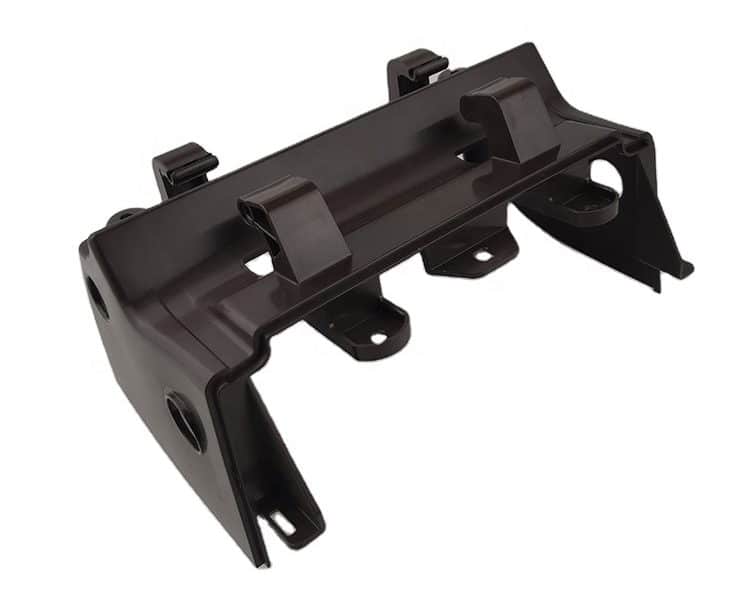
Table of Contents
Which one is Better?Counterbore Vs. Spotface Holes?
What is a Spotface Hole?
A spotface is a very shallow counterbore hole, meaning it is a basic cylindrical screw hole with a wider but shallow pit. Instead of allowing the fastener to sit fully below the level of the workpiece’s surface, a spotface hole is sunk just enough to create a level surface for the screw or nail head to rest against. They’re most critical when the workpiece has an uneven surface or when the fastener goes in at an angle other than 90°.
What is a Counterbore Hole?
A counterbore hole is meant to protect the head of its fastener. In essence, a counterbore screw hole is a basic cylindrical screw hole with a flat bottom that has a larger hole above it. This screw hole is ideal in cases that require a fastener, such as a screw, to sit flush with or below the level of a workpiece’s surface.
Spotface vs. Counterbore: Depth
Both spotface and counterbore styles consist of two coaxial cylindrical holes; the narrower and usually deeper one is meant for the screw’s shaft while the upper space of larger diameter is where the screw or bolt head fits. The main difference between a counterbore hole and a spotface hole is the depth of the upper cavity. A counterbore hole is typically deep enough to place a fastener’s head below a part’s surface. This can vary depending on the type of fastener you use and how broad the head is.

In contrast to a counterbore hole, the spotface style has a shallower profile and is designed to create a level area on an uneven surface. As a rule of thumb, a spotface’s depth defaults to the minimum necessary to place the fastener’s full diameter onto an even surface. If the part’s surface is already flat and meets the screw at a 90-degree angle, there’s no need to add extra depth. In this case, only a simple hole is required.
Spotface vs. Counterbore: Shape, Which one is better?
Both spotface and counterbore holes are created through mechanical milling or drilling processes. Counterbore and spotface holes have similar shapes so they can be created in a similar manner. First, a pilot hole is drilled into the part. This is just a basic cylindrical hole in the component. Most counterbore holes go right through the part, in which case drawings won’t specify a depth. If the hole does not go all the way through, the depth of the pilot hole will be indicated in the drawing. Figure 1 is an example of a counterbore hole:
Application
Spotfaces and counterbores are commonly used in various industries, such as automotive, aerospace, and general manufacturing. Their ability to create accurately located surfaces and recesses for fasteners allows for precise connections between components and ensures high-quality finishes.
In the following sections, we will explore the specific applications of spotfaces and counterbores within these industries.
Automotive Industry
In the automotive industry, spotfaces and counterbores play an essential role in creating secure connections between engine components, suspension systems, and other parts of a vehicle. By providing a flat surface for fasteners to sit flush against, spotfaces and counterbores ensure that these components are accurately located and securely attached to one another.
The use of spotfaces and counterbores in the automotive industry leads to increased precision and accuracy, enhanced strength and durability, and decreased manufacturing time, ultimately resulting in improved performance and reliability of vehicles.
Aerospace Industry
Similar to the automotive industry, spotfaces and counterbores are widely used in the aerospace industry for creating precise connections between aircraft components, such as landing gear and engine parts. By providing a flat surface for fasteners to sit flush against, spotfaces and counterbores ensure that these components are accurately located and securely attached to one another.
The use of spotfaces and counterbores in the aerospace industry results in increased precision and accuracy, enhanced strength and durability, and decreased manufacturing time, ultimately contributing to the overall performance and reliability of aircraft.
General Manufacturing
In general manufacturing, spotfaces and counterbores are used to create precise, flush connections between various components. These machining features enable the creation of accurately located surfaces and recesses for fasteners, ensuring a secure and precise connection between parts.
The use of spotfaces and counterbores in general manufacturing spans a wide range of industries and applications, from machining and woodworking to the production of consumer goods. By providing a flat surface for fasteners to sit flush against, spotfaces and counterbores contribute to increased precision, accuracy, and overall product quality.
Summary
In conclusion, understanding spotfaces and counterbores is essential for anyone involved in the manufacturing, automotive, or aerospace industries. These crucial machining features provide accurately located surfaces and recesses for fasteners, ensuring secure and precise connections between components. By learning the differences between spotfaces and counterbores, their symbols, dimensioning, and machining techniques, you will be better equipped to make informed decisions about the appropriate machining processes for your specific applications. As technology continues to evolve, the importance of these features in various industries will only continue to grow.

